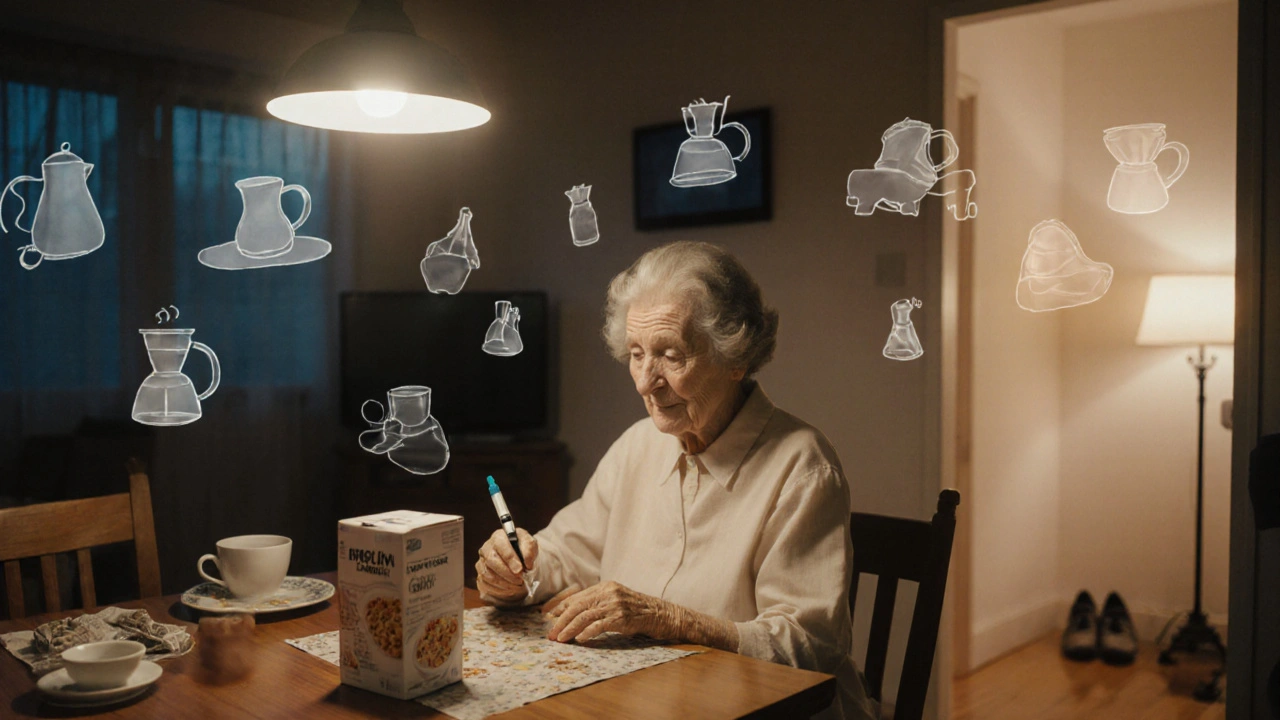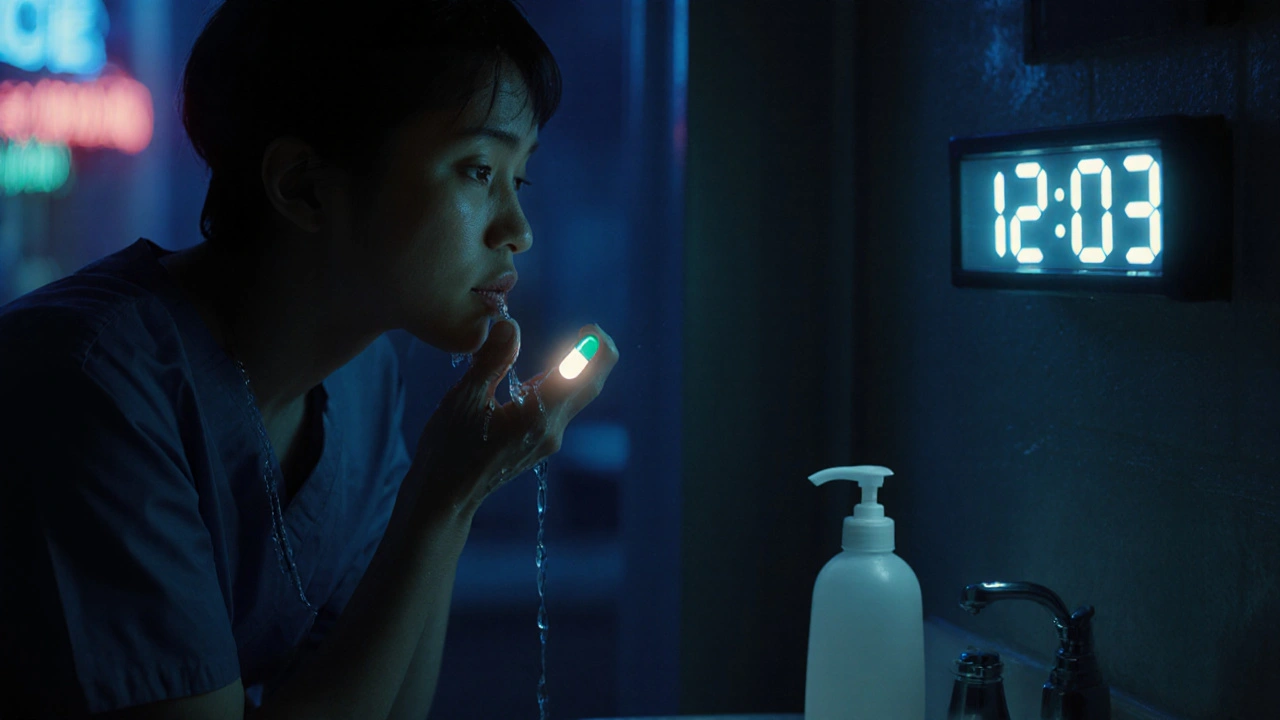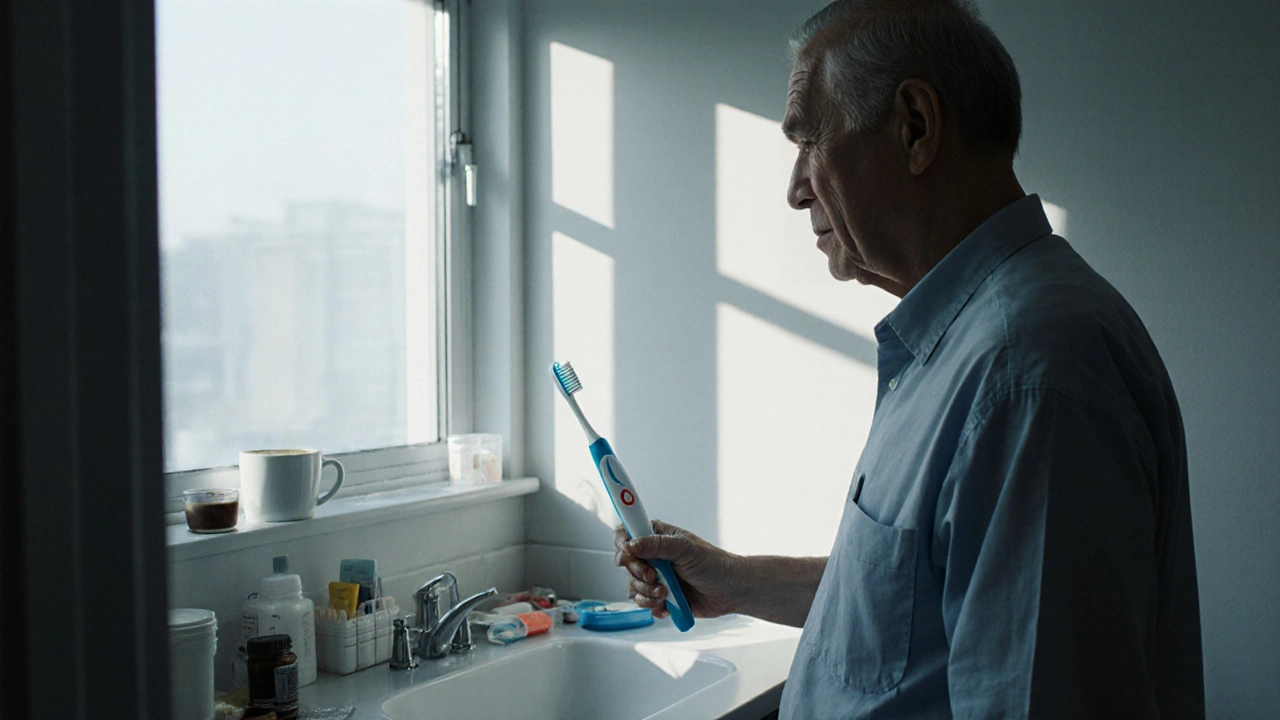Missing a dose of your medication isn’t just a slip-up-it’s a risk. Whether it’s blood pressure pills, diabetes meds, or antibiotics, skipping even one dose can undo weeks of progress. And here’s the truth: medication adherence isn’t about willpower. It’s about timing, triggers, and routine. If you’ve ever forgotten your pills because you were rushing out the door or got distracted by work, you’re not alone. Most people who miss doses aren’t being lazy-they’re just not connected to a solid anchor in their day. The fix? Pair your meds with habits you already do without thinking.
Why Habits Work Better Than Alarms
You’ve probably tried phone alarms, pill organizers, or apps like Medisafe or MyTherapy. They help at first. But after a few weeks, most people stop using them. Why? Because alarms are external. They demand attention. Habits are internal. They happen automatically. A 2021 meta-analysis of 47 studies found that habit-based strategies beat reminder apps by 23% in long-term adherence. Apps have a 68% abandonment rate after three months. Habit pairing? Only 12% of people drop it. That’s because your brain starts linking the pill to something you already do every day-like brushing your teeth or making coffee. After a few weeks, your body just knows: “This is when I take my meds.”The Science Behind Habit Pairing
This isn’t just common sense-it’s backed by neuroscience. When you repeat a behavior in the same context, your brain forms a neural pathway. The more consistent the trigger, the stronger the habit. That’s why pairing meds with toothbrushing works so well: you do it twice a day, every day, rain or shine. A 2023 study from Central Pharmacy showed 92% adherence when meds were taken right after brushing teeth. The American Heart Association, CDC, and American Diabetes Association all recommend this method. In fact, 97% of major health organizations now list habit pairing as a top-tier strategy for improving adherence. It’s not expensive. It doesn’t need tech. It works for people aged 18 to 85. And it’s especially powerful for seniors: 42% of patients over 65 use toothbrushing as their primary anchor.How to Pick the Right Anchor
Not every habit works for every med. You need to match timing, purpose, and routine. Here’s how to choose:- Morning meds → Pair with breakfast or brushing teeth. The best window is 7:00-8:30 a.m. Consistency within a 30-minute window boosts adherence by 37%.
- Evening meds → Link to toothbrushing or turning off the lights. This is the most reliable anchor for nighttime doses.
- Medications that need food → Always pair with meals. For example, diabetes meds like metformin work best with breakfast or dinner.
- Midday meds → Use lunch or checking your mail. These are stable, predictable moments in most people’s days.
Don’t force a habit that doesn’t fit. If you never eat breakfast, don’t tie your meds to it. If you’re always on the move at lunch, find another anchor. The key is consistency-not perfection.
Where to Keep Your Pills
Habit pairing isn’t just about timing-it’s about visibility. If your meds are tucked away in a cabinet, your brain won’t make the connection. Place them where your anchor happens:- Keep your morning pills next to your toothbrush or coffee maker.
- Put your evening meds on your nightstand, right beside your toothbrush.
- If you take meds at lunch, leave them on the kitchen counter where you prep your food.
Stanford Medicine found that placing meds in high-traffic areas increases initial success by 28%. You’re not just reminding yourself-you’re making the behavior unavoidable. No more digging through drawers at 10 p.m. because you forgot.

Step-by-Step: Build Your Routine
You don’t need a fancy app or a nurse to get started. Here’s how to build your own habit-based system in four simple steps:- Track your routine for 3-7 days. Write down what you do every day at the same time. Coffee? Shower? Walk the dog? Check your email? These are your potential anchors.
- Match meds to anchors. Look at your prescription labels. Does your pill need to be taken with food? Then link it to a meal. Is it a once-daily dose? Then pick the most consistent habit in your day.
- Place your meds where the habit happens. No hiding. No drawers. Put them right where you’ll see them-on the sink, next to the toaster, on your desk.
- Stick with it for 21 days. That’s the average time it takes to form a habit, according to a 2020 study in the European Journal of Social Psychology. Don’t skip days. If you miss one, just restart the next day.
Some people see results in 14 days. Others take 66. It depends on the complexity of your routine and how many meds you take. But if you stick with it, your brain will do the rest.
What If Your Schedule Changes?
This method works best for people with stable routines. Retirees, stay-at-home parents, and office workers often see 94% success. But if you work nights, rotate shifts, or travel often, it’s harder.For shift workers, habit pairing alone isn’t enough. You need backup plans:
- Use a pill organizer with labeled compartments for each shift.
- Set alarms tied to your clock, not your routine (e.g., “Take pill at 11 p.m. every night, even if you just got off work”).
- Pair meds with a non-routine anchor: drinking water, washing your hands after a shift, or checking your phone when you get home.
One nurse on Reddit shared: “I used to miss meds every other day. Now I take them right after I wash my face after my shift. It’s not perfect, but it’s working.”
When Habit Pairing Isn’t Enough
Habit pairing fixes unintentional nonadherence-the kind that happens because you forgot, got busy, or got distracted. That’s 60-70% of missed doses. But it doesn’t fix intentional nonadherence.That’s when people skip pills because:
- The meds make them feel sick.
- They’re too expensive.
- They don’t believe it’s helping.
Dr. Robert A. Ridley from Johns Hopkins warns: “Relying only on habit pairing without addressing cost or side effects creates false security.” If you’re skipping pills on purpose, no amount of toothbrushing will help. Talk to your doctor. Ask about generics. See if your insurance covers a lower-cost version. There’s no shame in needing help beyond routines.

What Works Best in Real Life?
Real people are using this every day. Here’s what they say:- “I used to miss my 8 a.m. blood pressure pill 12 times a month. Now I take it while the coffee brews. I’ve missed it twice in six weeks.” - u/HealthyHabitHero, Reddit
- “My mom has diabetes. We put her insulin pen next to her cereal box. She hasn’t missed a dose in 8 months.” - Trustpilot review
- “I take my statin every night after brushing. It’s automatic. I don’t even think about it.” - Central Pharmacy patient survey
And the numbers back it up. In a 2023 pilot program, Central Pharmacy’s ‘RoutineSync’ tool-which analyzes your daily habits to suggest the best pairing-boosted adherence by 48% in just two months. AmerisourceBergen found that 78% of people who stuck with habit pairing kept it going for over a year. Only 32% did the same with apps.
What’s Next for Medication Adherence?
The future is blending habits with tech. MyTherapy’s 2023 update now lets you link reminders to calendar events. Mayo Clinic is testing AI that watches your smartphone usage-like when you open your coffee app or turn on your TV-and suggests the best time to take your meds. Smart home devices are getting involved too: imagine your coffee maker triggering a gentle chime to remind you to take your pill.But none of this replaces the core idea: anchor your meds to something you already do. No tech needed. No cost. Just consistency.
Right now, 87% of Medicare Part D plans offer habit pairing education. 73% of community pharmacies include it in their standard counseling. You don’t have to figure this out alone. Ask your pharmacist. They spend an average of 8.7 minutes per patient helping people build these routines. That’s time well spent.
Medication adherence isn’t about being perfect. It’s about being predictable. If you take your pills the same way, every day, your body learns to expect them. And that’s how health becomes routine.
Can I pair multiple medications with the same habit?
Yes, if they’re taken at the same time. Grouping doses within a one-hour window improves adherence by 27%, according to a 2022 study in the Annals of Internal Medicine. For example, if you take three pills in the morning, put them all next to your toothbrush and take them together after brushing. Just make sure none of them have conflicting instructions (like one needing to be taken on an empty stomach).
What if I travel or change my routine?
Keep your meds visible wherever you go. Pack them in your toiletry bag next to your toothbrush. If your anchor changes, pick a new one that’s still consistent-like drinking water after waking up or checking your phone in the morning. The goal is to keep the trigger reliable, not the exact activity.
How do I know if my habit pairing is working?
Track your doses for 21 days. Use a simple calendar or app to mark each day you take your meds. If you miss fewer than two doses in a month, you’re doing well. Many people see a drop from 10+ missed doses per month to just 1 or 2 after switching to habit pairing. If you’re still missing doses, check your anchor-is it truly consistent? Are your pills visible?
Is habit pairing safe for people with dementia?
Not on its own. People with dementia often forget routines or can’t follow multi-step processes. The Alzheimer’s Association recommends caregiver involvement for medication management. Use pill organizers with alarms, locked dispensers, or home care services. Habit pairing can still help-but only with someone else ensuring the routine is followed.
Do I need to keep doing this forever?
Yes-if you’re on long-term medication. Habits don’t fade if they’re reinforced. Once your brain links the pill to your toothbrush or coffee, it becomes automatic. You won’t need to think about it. That’s the point. This isn’t a temporary fix. It’s how you live with your condition for years to come.
Can I use this with my child’s medication?
Absolutely. Kids respond well to routines. Pair their medication with brushing teeth, breakfast, or bedtime stories. Use a sticker chart to celebrate consistency. For younger children, make it part of a game: “After you brush, we take your medicine, then you pick your bedtime story.” The habit becomes part of the ritual, not a chore.
What to Do Next
Start today. Grab your pill bottle. Look at your calendar. What’s one thing you do every day without fail? Brush your teeth? Eat breakfast? Check your phone? Put your meds right next to it. Don’t wait for Monday. Don’t wait for a better time. Right now, in the next five minutes, make the connection.If you’re unsure which habit to pick, ask your pharmacist. They’ve helped thousands do this exact thing. And if you’ve already tried this and it didn’t work? That’s okay. Try a different anchor. Maybe it’s not toothbrushing-it’s turning on the TV at night. Or pouring your morning water. There’s no wrong habit, only the one you forget.
Your health doesn’t need a miracle. It needs a routine. And routines are built one small, consistent action at a time.


Bethany Buckley
November 26, 2025 AT 19:40Let’s be candid: the neuroplasticity of habit formation is not merely a behavioral hack-it’s a reconfiguration of the dopaminergic reward pathway. When you tether pharmacological intake to a pre-existing behavioral anchor-say, toothbrushing-you’re leveraging the basal ganglia’s procedural memory architecture to bypass executive function fatigue. This isn’t ‘tricking’ your brain; it’s *recalibrating* it. The 92% adherence metric? That’s not anecdotal-it’s neurobiological inevitability. The real tragedy isn’t nonadherence-it’s that we still treat medication as a cognitive task rather than a somatic ritual.
Stephanie Deschenes
November 28, 2025 AT 12:56This is such a practical approach. I’ve seen patients struggle with alarms and apps for months, only to give up. But pairing meds with brushing teeth? Simple, visible, and tied to something they already do twice a day. One elderly patient I worked with started keeping her blood pressure pills on the sink next to her toothbrush-and within two weeks, she was taking them without even thinking about it. No reminders needed. Just consistency.
hannah mitchell
November 30, 2025 AT 05:41Kinda makes you wonder why we overcomplicate everything. I took my statin with my morning coffee for six months and never missed once. No app. No alarm. Just coffee → pill. My brain just… knows now. Weird how simple stuff sticks.
vikas kumar
December 2, 2025 AT 03:01I live in a small town in India where many people don’t have smartphones or even reliable electricity. But everyone brushes their teeth. So when the local clinic started teaching patients to link their meds to toothbrushing, adherence jumped from 40% to 89% in six months. No tech. No cost. Just human behavior. This isn’t just smart-it’s equitable.
Vanessa Carpenter
December 3, 2025 AT 01:32I love how this method doesn’t shame people for forgetting. It just gives them a better system. I used to feel guilty every time I missed my afternoon pill until I started leaving it on my laptop charger. Now I see it every time I plug in. No pressure. Just a quiet nudge. It’s like my environment is helping me, not judging me.
Bea Rose
December 4, 2025 AT 04:03Michael Collier
December 5, 2025 AT 03:31It is with considerable appreciation that I acknowledge the empirical rigor and clinical pragmatism demonstrated in this exposition. The synthesis of neuroscientific principles with behavioral economics yields a methodology of remarkable fidelity to real-world adherence patterns. The recommendation to position pharmaceuticals in high-traffic domestic zones constitutes not merely a heuristic, but a paradigmatic shift in patient-centered care delivery. I shall certainly incorporate this framework into my next patient counseling protocol.
Shannon Amos
December 6, 2025 AT 06:35So let me get this straight-you’re telling me the secret to taking my pills is… not being an idiot? Who knew? 🤡